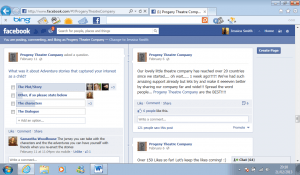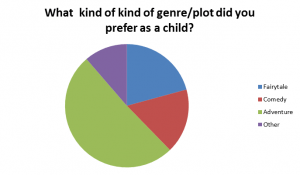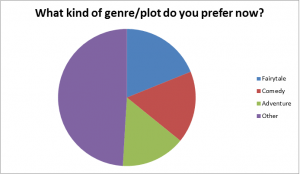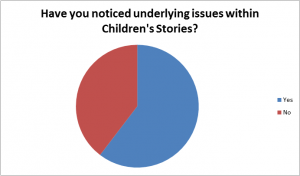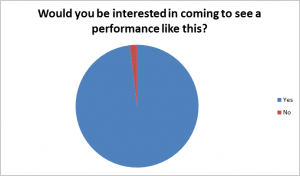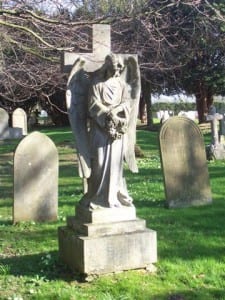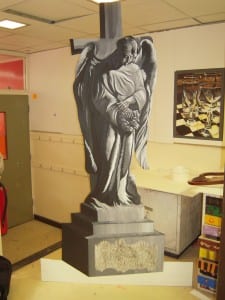Characters and Casting Session Workshop

‘The Vision’ – Possible ideas to play with in the casting session:
- The Gothic revival of the fairy tale as a reflection on society and gender values.
- Inspiration/based loosely on Angela Carters deconstructed fairy tales ‘The Bloody Chamber’
- I feel the idea of corruption is a theme we should really play with, in acting, set design, lighting it can all tie in together.
“And for the first time in my innocent and confined life I sensed in myself a potentiality for corruption that took my breath away.”-(Countess Bloody Chamber)
- Exploring the idea of ‘corruption’ under and positive OR negative light in opposition to the ‘perfect’ fairy tale endings. If we explore the effect of corruption on the countess it actually pulls her away from the fairy tale innocence archetype.
“He sensed a rare talent for corruption.”
Exploration of gender binaries, fairy tale literature representation etc.
- E.g. the mirror scene in the bloody chamber shows the sexual awakening of the young woman, she herself views her corruption as positive as she looks at her reflected body.
“Elaine Jordan suggests that the death of the virgin girl is the symbol of ‘killing masculine representations’ not a ‘killing of women’ – (Regarding the Snow Child, Deconstructed masculine evil in Angela Carter)
- How do you feel about this?
- Why is there a feeling that this image is not correct?
- What sort of message have fairy tales inadvertently been creating?
- Do you feel Angela Carter represents a female awakening in her tales?
- I place the countess as having just finished her fairy tale ending and married the count – and what we are left with is the ‘reality’ of her situation. What glitches are created between the fairy tale and real worlds that can transcend into more than just a spectacle. E.g. fairy tale vs. reality becoming childhood memories vs. adult life.
Character Breakdown (various interpretations for you to choose what you feel suits the character you visualise playing)
Count
- A typical villain or simply perceived this way through the countess subconscious desires to ‘be free’ from her innocent confined life? Is he used as an excuse for the countess to be corrupted?
- Where do you feel the evil really lies in this tale? If any true evil at all?
- The Count Vs. The Piano Tuner
As the inversion of binaries is something we are definitely approaching (on what scale remains to be explored, but im thinking big!) I do not necessarily see the count being your typical stalking, dark, piercing figure as like so many other traditional villains. He could perhaps be the most unsuspecting looking character who the audience feel truly shocked when faced with his actions, it challenges how they should feel and what stereotype they have come to expect … even when told that this is dark fairy tale, they still come with certain expectations.
Countess
- Is this girl really innocent?
- Does she herself have villainous qualities?
- Does she become her ‘own woman’ through corruption?
- Is this positive or is this negative?
- How does it make you feel to think about something positive coming from such a deeply negative scenario
She has stepped out of the fairy tale, mundane world of her life and into ‘reality’, with this she welcomes her sexual female awakening. Some arguable villainous qualities that outrank the count. She takes the innocent image of the fairy tale character no longer in a positive light but as female repression. She becomes her own woman after marrying the count. She has longed for excitement and actually places herself in the situation. She is not ignorant or naïve to her marriage. She is curious.
The House Keeper
The house keeper keeps things ordered and is constantly trying to ‘maintain’ relationships, I vision her constantly trying to fix the corruption around her by fixing cracks in the sets, putting paintings back together, hiding broken mirrors etc She is very much part of the furniture, set in her old fairy tale ways – a character who refuses to leave the fairy tale setting but who finds herself placed in this new age of corrupt independence. The world, even this mock-fairy tale world is moving on and she is left behind.
The Piano Tuner
The blindness of the piano tuner gives him insite, as he is blind to the corrupt world around him – he is in his own world and this gives us room to explore what sort of world he imagines himself in
- e.g. should it be a fairy tale like most people or should it be a version of reality?
He is in love with the countess because of her desire to be free, not because she is reserved or innocent. In some ways she is the very opposite of this innocent piano tuner, he is attracted to the differences between their two worlds.
I vision him being unable to tune the piano so even the music he plays is corrupted, as a literal representation of a dislocated time but which at the same time holds elements of truth and beauty to it that you would not get with a perfectly tuned piece of music.
The Ghost/ Spectre/ Mother/ Ex-wife/ Nature
This character is very much open to interpretation and it is something I want us all to explore in the casting session and reach a decision with.
- Should this character act as a warning? If so, to who?
- If it in an ex-wife character did he count truly love this woman?
- Do we want a supernatural element heavily involed? It was very common in gothic literature to have characters representative of nature. Reflective of mother nature, human nature etc
I imagine this character to be heavily linked with the design, almost a ‘Puck’ like character from Shakespeare’s Midsummer Night’s Dream – containing mystical, supernatural elements but with a rational truth or warning attached to them. (Also can help if any narration is needed, although I don’t want It to be heavily narrated!)
The Snow Child
Starting off as a pure innocent picture of perfection. The snow child almost seems out of place in our production because of her links to the traditional, but this is something that will work in creating and blurring the borders between the two worlds. I see the snow child as almost another narrative going on within our play, her own journey could perhaps mirror the passage from child hood fairy tale to the adult world?
- What happens to the snow child in the end?
- How do you think we can show this journey?
Workshop Tasks (some of this can be done in preparation for the workshop/casting session)
- Try to come with answers to all the questions I have posted above, I think it is important to have different perspectives put forward to create the best possible production. We will begin by discussing these so we have a feel for what sort of character we are pushing for in the casting session.
- As a short exercise, (if like you can prepare this beforehand alone or in pairs, and you will be given some time on the day) in order to explore the passage of time and the corrupt ‘fairy tale’ image I feel it would be useful to see where these ideas stem from. Take a well-known fairy tale character and move them on 15 years in their life to after their fairy tale ending.
- What has happened to these characters?
- Has there been a corruption?
- Do you feel they’ve maintained the perfect fairy tale ending?
- What images of corruption can you see?
This can be a short improvisation; perhaps the character simply reflecting like we will have the countess doing in scene 2, or it could be a quick scene from a day in their lives.
(for inspiration see the video below, a new film based on Hansel and Gretel 15 years into the future)
After this we will turn to the characters in our production and discuss how the previous exercise can be applied to the lives of our characters.
- Have an idea of the character you want to play and why you want to play this. What experience can you bring to this character?
- What corrupt images/symbols do you see in your character that you feel can be explored?
- You will be given a short extract of your character from the script with someone to read with you if need be, to get a feel for the role and to see if you suit it well and how you feel in this role after the workshop today.
… That’s it!
